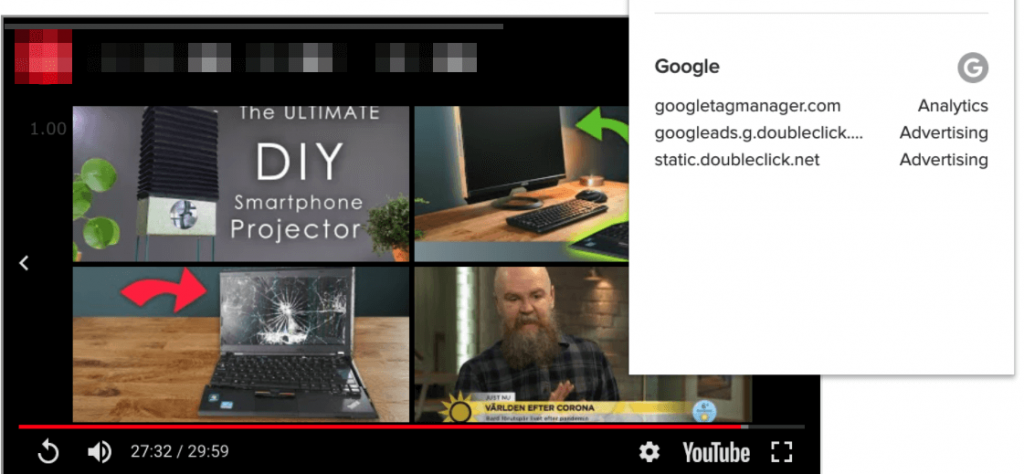We at Streamio are big YouTube users and think it’s a great social platform for video. Unfortunately, using YouTube is not without problems. Many people see it as a free video platform, but everything comes at a cost!
In the case of YouTube, the person who posts video pays by giving away their customer information which is then sold for advertising. The viewer pays by looking at targeted advertising based on all the collected customer information.
Read on for our tips on how to use YouTube smarter!
Four benefits of publishing company videos to YouTube
- Your company and videos will be searchable on the world’s second largest search engine (YouTube!)
- YouTube video search results are prioritized on the world’s largest search engine (Google!)
- Your videos will be visible and accessible to YouTube’s 2.3 BILLION users
- No direct cost other than that all user data being donated to YouTube and its parent company Google
Four drawbacks to YouTube on your website
- Your visitors are tracked by Google, which then uses this information to sell advertising. It may well be your competitors who market themselves against these.
- The appearance of YouTube players doesn’t follow your brand’s design. For example, the YouTube logo cannot be removed from the player, and the YouTube play button is a powerful brand.
- Also, consider the pitfalls of losing your visitors to YouTube. Either through the YouTube button in the player or through other videos shown at the end, which may well come from competitors or give other irrelevant suggestions based on the end user’s history. You risk losing your visitors resulting in lower conversion rates and sales, and you can’t control the next step in the customer journey.
- YouTube requires knowledge to be used correctly. It is vital to review that you do not break any rules with cookies and other tracking mechanisms that YouTube uses, making it challenging to comply with GDPR. The video almost invariably contains personal data that is transferred to third countries if you are using Youtube. Therefore, it is necessary to ensure that YouTube handles them correctly under the company’s data policy and GDPR.

The proposal videos could be from one of your direct competitor's!

The right YouTube use in business
How can you take advantage of all the benefits of YouTube without suffering the disadvantages? Here you will get a guide to the different things you need to keep track of to be right! The first overarching issue is GDPR, which all organizations constantly need to relate to. There, YouTube itself poses a specific problem that we can divide into three parts:
1. GDPR and uploading to YouTube
Firstly, videos almost always contain personal data. By uploading or streaming via YouTube, personal data is stored with a US company, which since the Schrems-II ruling is complicated. We are not qualified to give legal advice, but a problem here needs to be addressed. Check internally in your organization how you deal with Schrems-II. Many of our customers have concluded that it is not legal, but each company must assess.
2. Contracts with employees
Employees who upload to YouTube as part of their duties probably need to regulate this in their employment contracts. The alternative could be with consent, but it also has drawbacks that need to be addressed, as anyone giving consent also can revoke consent at any time.
3. GDPR and publishing videos to YouTube
As long as you only post on YouTube, there is probably no problem other than those described above. Users visit the YouTube service with the terms and conditions that result from this. As long as visitors watch your videos on YouTube’s platform, that’s probably fine. It becomes problematic if you embed a YouTube movie on your website, and here, there are clear risks that you are doing wrong. Our simple advice is to use a European video platform, preferably Streamio, to publish on your web page and publish in parallel on YouTube.
Keep in mind that even for European services, it is crucial to check whether US cloud services are used to ensure that you do not have problems with GDPR compliance following the Schrems-II ruling.

